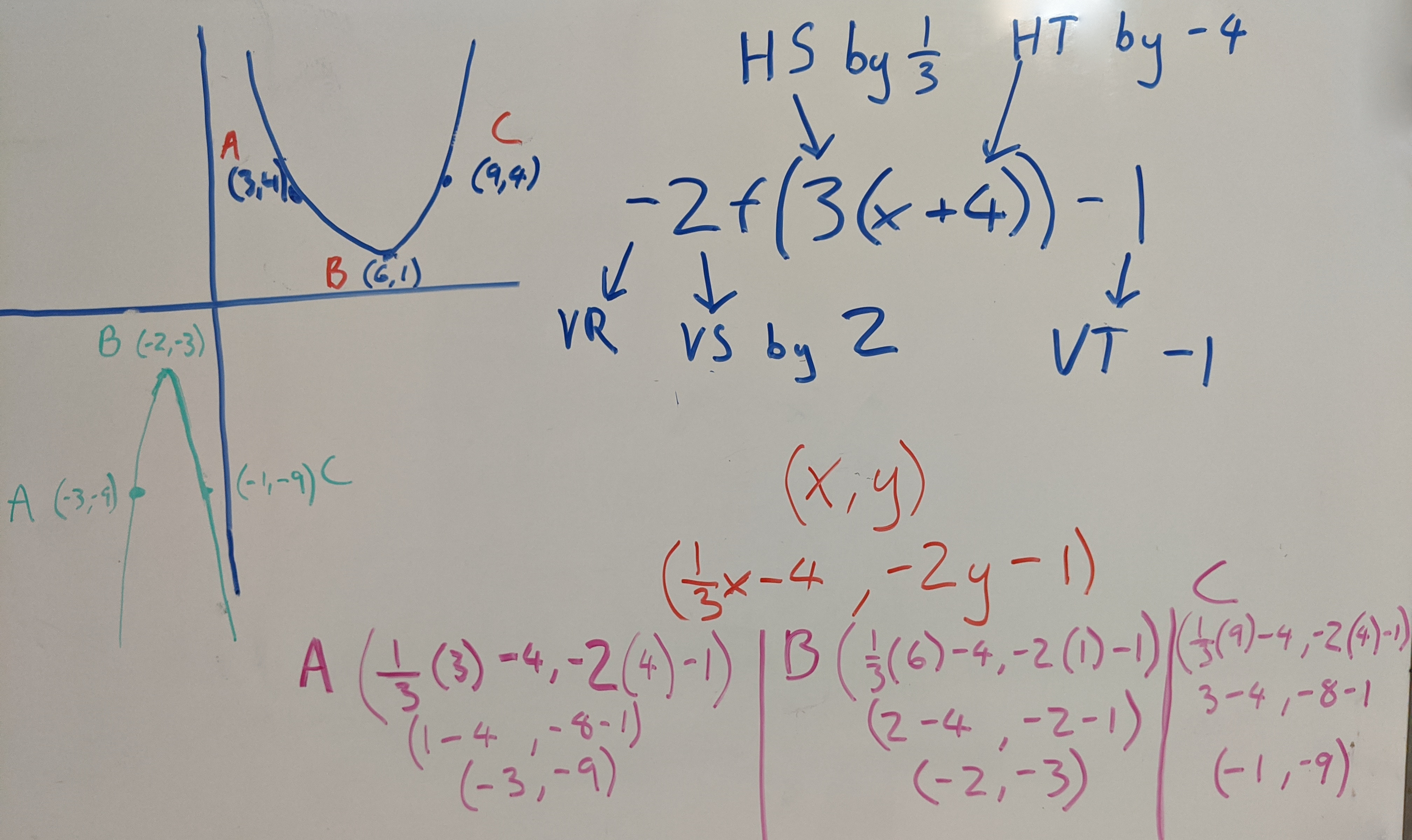January 02, 2020 / by Adam Mayhew / In Math 30-1
Transformations Made Easy part 2
In part 1 we learned how to properly identify transformations. Now we’re going to learn how to apply them to graphs.

In the picture above you can see a graph and some transformations on f(x) that we are going to apply. First we identify each transformation using the skills we learned in part 1.

Next we write down the math that each transformation creates to each variable. This is called mapping notation. We apply the horizontal transformations to X and the verticals to Y, keeping numbers that were originally multiplication as multiplication and the numbers that were addition/subtraction as addition/subtraction.

Note that there is almost no difference between a stretch and a reflection in the mapping notation. You just include the negative with your multiplication.
Now that we know the operations we are going to apply to each point we simply plug in each coordinate of our original points and find our new points.

Finally we plot our new points on our graph like so.

And kabam! We’re all done, mission accomplished! You are now a transformations wizard! While there is more to transformations than just what I’ve shown here, this is a very large part of it. It is also the most important part because it applies throughout the rest of Math 30-1, especially to logarithms and trigonometry. I hope these short lessons on transformations have helped you. If you still need help drop me a line and book a one-on-one tutoring session and I’ll get you sorted out.
